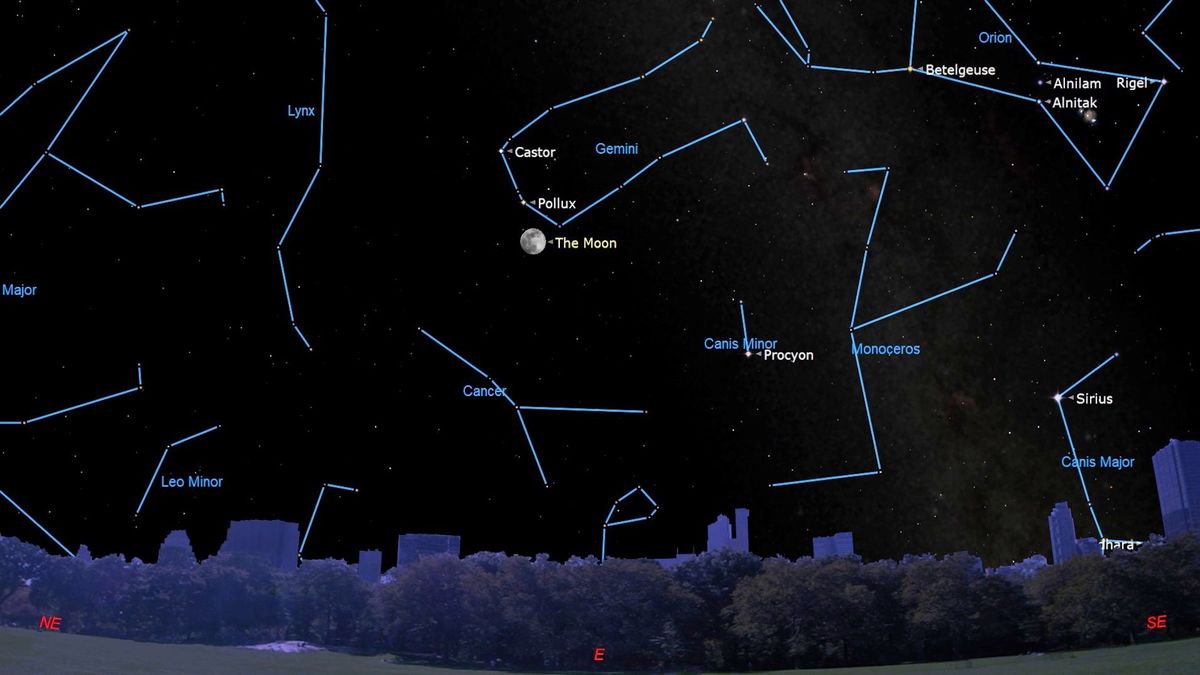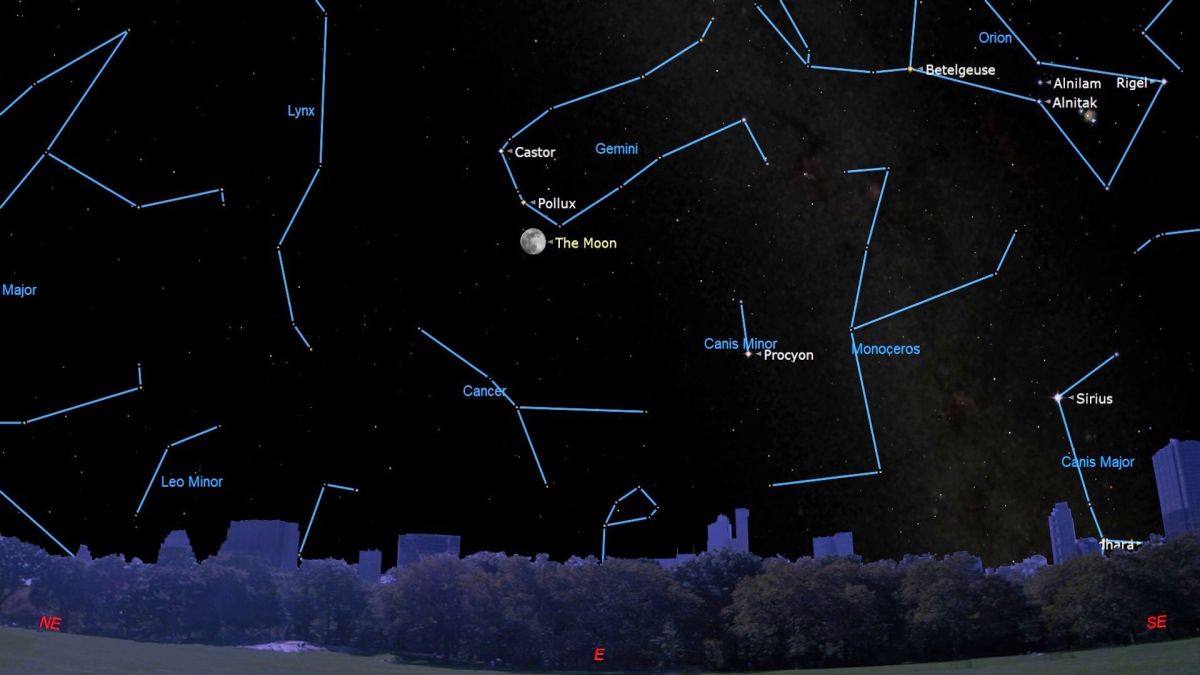
The bright, nearly full moon will meet up with the Gemini twin stars of Castor and Pollux this weekend in an eye-catching winter display.
The waxing gibbous moon will be over the horizon to the east on Friday (Feb. 3) and doesn’t set until around sunrise the next day and will therefore remain close to the stars for most of the night. In New York City, the moon rises at 3:04 p.m. EST (2004 GMT), according to In the Sky.
The brightest stars in the Gemini constellation, Castor, and Pollux are not that similar in appearance — their status as “twins” comes from the fact that they are so close to each other in the night sky. Pollux is the brightest of the Gemini twins with a golden hue, while Castor is fainter and bluish-white in color.
Related: The 10 brightest stars in the night sky
In real terms, the stars aren’t actually that close together at all. Pollux is closer to Earth at around 33 light-years away, while Castor is around 51 light-years distant, according to NASA (opens in new tab). Proximity isn’t the only reason Pollux is brighter. The red giant star that is twice as massive as the sun and is approximately 43 times more energetic than our sun.
Castor might not be kept company by Pollux, but it is far from alone in the cosmos. This star is actually at least six stellar bodies in one. A small telescope can resolve Castor’s nature splitting it into two stars, while a spectrograph is needed to fully split it into three double stars. Altogether the mass of these six stars is around six times that of the sun.
According to EarthSky (opens in new tab), January, February, and March are great times for observing the twin stars of Gemini. The constellation is high in the sky to the east around nightfall and reaches its highest in the sky at around 10 p.m. your local time no matter where an observer is on the globe in early February at the time of the moon meeting.
If you’re hoping to catch the moon close to Castor and Pollux, our guides for the best telescopes and best binoculars are a great place to start. If you’re looking to snap photos of the night sky, check out our guide on how to photograph the moon, as well as our best cameras for astrophotography and best lenses for astrophotography.
Following this meeting of the moon with the Gemini twins the lunar face will be fully illuminated on Sunday (Feb .5) during February’s Snow Moon.
Editor’s Note: If you snap the moon close to Castor and Pollux, and would like to share it with Space.com’s readers, send your photo(s), comments, and your name and location to spacephotos@space.com.



